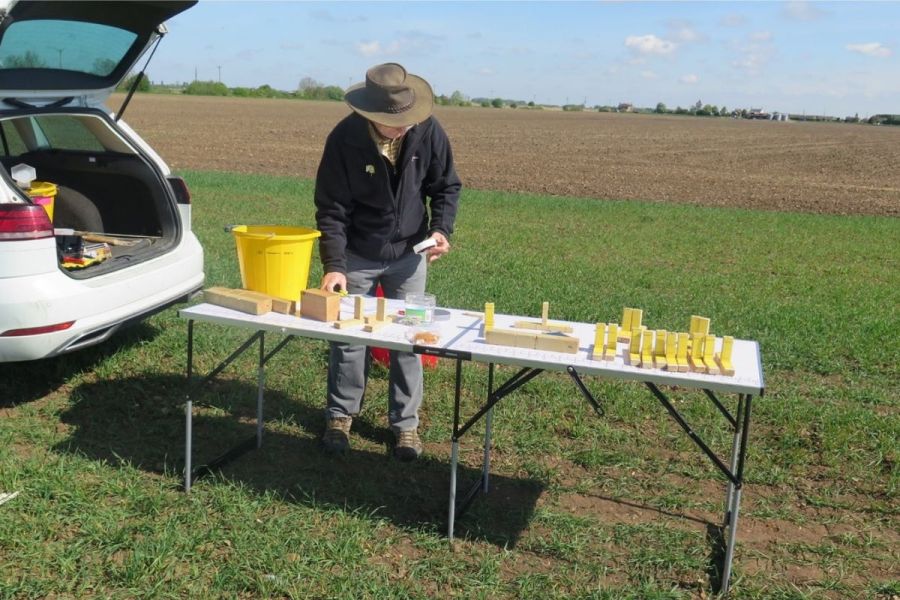When grassweeds survive post-emergence herbicides, it’s often assumed that the spray hasn’t worked and resistance may be at play. But recent research shows that application matters just as much. CPM reports.
“Good spray operators don’t like drift because it shows that application is less than ideal.”
By Lucy de la Pasture
Two recent pieces of research highlight why application matters for spring herbicides. While poor weed control is often blamed on resistance, results show that nozzle choice, speed and conditions all have a huge effect on product performance.

Results from a national survey show post-emergence resistance in ryegrass is less common than in blackgrass, though, for pre-emergence actives the opposite is true, says Roger Bradbury.
“Results from the Bayer/NIAB ryegrass survey showed widespread susceptibility to post-emergence herbicides but many farmers still reported problems using ALS-chemistry to control ryegrass,” says Bayer’s Roger Bradbury.
“Last year, we carried out a separate project looking at the effect of nozzle choice and sprayer set up on herbicide application. Linking the results of these projects together provides useful guidance on how to get the best control of weeds this spring.”
Turning first to the survey, he explains it tested 197 ryegrass samples that had been sent in by farmers and agronomists. Of these, 65.5% were still susceptible to either ALS-chemistry or pinoxaden. Roger highlights that this level of susceptibility is a key difference between ryegrass and blackgrass, and underlines that there are subtle differences between the best strategies to control each weed.
“From these results, it appears that post-em resistance in ryegrass is less common than in blackgrass. Interestingly, for pre-emergence actives the opposite is true,” he says. “But results from national surveys are only so much help, knowing the resistance status in your field is the most important thing.”
Roger urges those planning to use an Atlantis-type product (based on mesosulfuron and iodosulfuron) this spring, to focus on application timing and technique to give the herbicide the best chance of success.
“In glasshouse resistance tests, application is near perfect with the herbicide applied precisely and drying on the target leaf. In the field it’s obviously more difficult, but the application research shows improvements could be made,” he adds.

The most important conclusion from the work is that the label recommended nozzle performed the worst, so look beyond the label for nozzle selection, suggests Tom Robinson.
Independent spray application specialist Tom Robinson led the research, which investigated product stewardship and efficacy. “We wanted to reduce drift and retain good product performance. In the trials, we tested Roundup (glyphosate), but the results are equally relevant to farmers applying post-em chemistry this spring.”
Four nozzles featured in the trials – the 110 Fan Jet, which is the label standard recommended nozzle for herbicide application; the 3D nozzle, angled forward and back; Hypro Guardian Air 75% drift reduction; and the Lechler ID3 90% drift reduction. The applications were made by a farm sprayer applying 100 l/ha at 12 km/h to a field of spring wheat, water sensitise paper was positioned in the crop to measure coverage.
He points out that the challenge in the spring is for the herbicide to land and settle on the target leaf. A finer spray quality helps get the coverage but suffers more from drift in windy conditions.
“Good spray operators don’t like drift because it shows that application is less than ideal. The biggest problems caused by drift are seen at field margins and next to watercourses – in these locations drift must be under control.”
He highlights that, apart from the environmental considerations, if the spray is drifting then weed control will also be compromised.
In the trial, the poorest performing nozzle was the fan jet – it increased the risk of drift without any gain in weed control. The 3D gave the best control but was prone to drift, while the Lechler ID3 had the least drift but had slightly lower weed control. A good compromise option is the Guardian Air, says Tom. “With lower drift and good control, it has the highest droplet number among the LERAP 3-star rated nozzles.
“The most important conclusion is that the label recommended nozzle performed the worst, so look beyond the label for nozzle selection. In ideal conditions, with winds of up to force 2 (6-11 km/h) with few stronger gusts, the 3D is the best option. At higher windspeeds, the Guardian Air or Lechler nozzles are probably a better choice.”
Boom height is the most important factor for drift management, according to Tom, followed by nozzle choice and finally, speed. He recommends 50cm is a good rule of thumb for boom height, although some sprayers and nozzles can go even lower.
“Vehicle speed, setup and maintenance are all important because, if the boom is unstable the operator usually increases its height, leading to more drift and poorer spray coverage.
“For herbicide applications, the general rule is a maximum speed of 12km/h. There is a definite drop off in control when you go faster because of more turbulence and poorer deposition. Interestingly, we don’t see the same effect in fungicides, where 16km/h is a safe application speed.”
Tom suggests that when controlling grassweeds this spring with glyphosate, or in-crop with a post-em herbicide, it would be beneficial to use the 3D nozzle or something similar. “Aim to only apply in good spraying conditions as this allows you to choose the nozzle that will give the best coverage and control rather than trying to ‘get something on’ in poorer conditions.”
For glyphosate applications, Roger adds that winter hardened broadleaf weeds often require fairly high rates (1440-1800 g/ha) for effective control in spring.
Tank-mixing a T0 and post-em is one option to reduce workloads if the post-em is delayed, he says. “Efficacy data show that mixes of Atlantis Star (mesosulfuron+ iodosulfuron+ thiencarbazone) plus several common fungicides cause no drop off in weed control.”
The following fungicides were tested at full label rate in tank mixes: Arizona (folpet) plus Variano Xpro (bixafen+ PTZ+ fluoxastrobin); Arizona plus Boogie Xpro (bixafen+ PTX+ spiroxamine); Aviator Xpro (bixafen + PTZ); and Ascra Xpro (bixafen+ PTZ+ fluyopyram).
“Atlantis Star was applied at the T0 fungicide timing in early April with a number of different fungicides,” says Jamie Oakley, Bayer cereal herbicide specialist. “All of the mixtures tested have biological compatibility, this means applying in a mixture doesn’t cause a herbicide efficacy penalty. This is exactly what we aimed to find out in these trials.
“A combined T0 and post-em spray will be a helpful option for many farmers but don’t compromise on the post-em timing by waiting for the T0,” he suggests. “You are more likely to get good control of challenging weeds like blackgrass and ryegrass when they’re small.”
This article was taken from the latest issue of CPM. For more articles like this, subscribe here.
Sign up for Crop Production Magazine’s FREE e-newsletter here.




